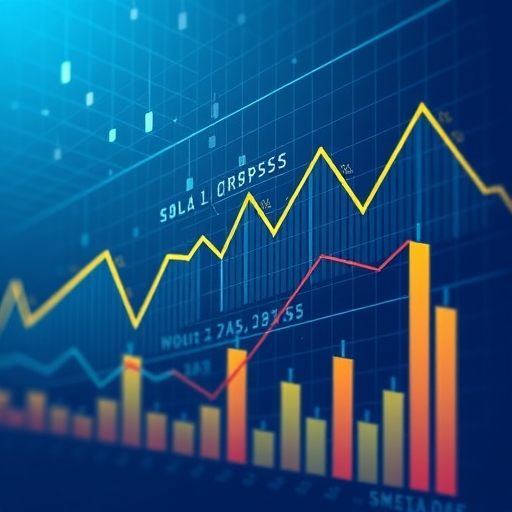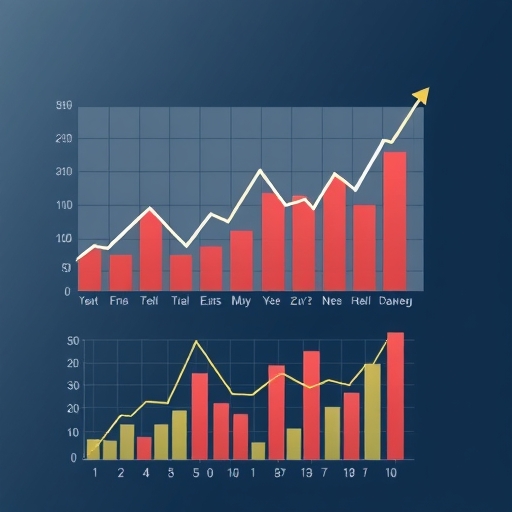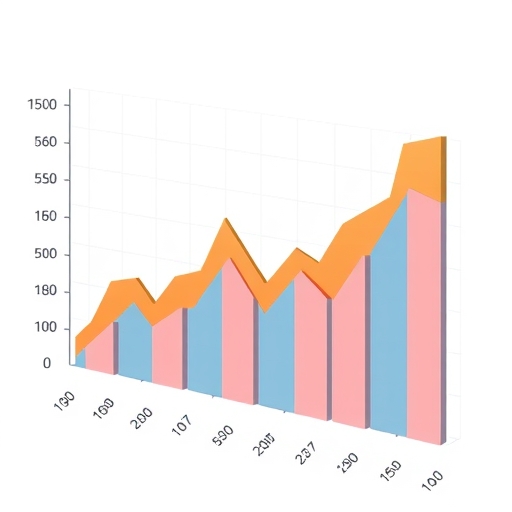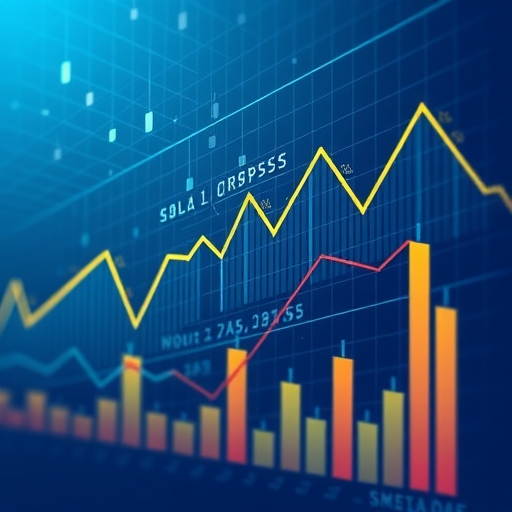Are Exchange-Traded Funds (ETFs) Truly Safer Than Your Savings Account or Even Individual Stocks?
Many investors harbor misconceptions about the safety of Exchange-Traded Funds (ETFs), often viewing them as inherently riskier than traditional savings accounts. This article aims to demystify ETF investing by clearly distinguishing between real and mythical risks, highlighting the often-overlooked dangers of savings accounts, and illustrating how ETFs can be a powerful, diversified, and regulated tool for achieving long-term financial goals. By understanding the true nature of investment risks and protections, you can make more informed decisions to secure your financial future.
We’ll embark on a journey to explore the tangible risks associated with ETFs, differentiate them from specific company risks, and touch upon factors like currency fluctuations and liquidity. Then, we’ll peel back the layers on savings accounts, exposing how inflation silently erodes your wealth and the precarious nature of bank deposits. Following this, we’ll delve into the robust regulatory frameworks and inherent diversification that safeguard ETF investments. Finally, we’ll compare ETFs with individual stocks, provide insights into various ETF types and trading strategies, and guide you on smart selection, empowering you to tailor your investment approach for optimal returns.
Deconstructing ETF Risks: Market Volatility and Beyond
When we talk about investing, the first thing that often comes to mind is risk. It’s a fundamental principle of finance: for every potential return, there’s an associated level of risk. Exchange-Traded Funds, or ETFs, are no exception. However, understanding the *types* of risk involved is crucial for any investor.
The most significant risk for an ETF, especially one that tracks a broad market index like the MSCI World Index or the S&P 500, is market risk. This is also known as systemic risk, and it refers to the risk that the overall market will decline, impacting nearly all investments. Think about a global economic downturn or a major geopolitical event – these affect entire markets, not just individual companies. This type of risk cannot be diversified away entirely, but the good news is that investors are generally compensated for taking on this systemic risk with higher potential long-term returns compared to risk-free assets. How much risk an ETF carries is often indicated by a risk rating (typically on a scale of 1-7) found in its Key Investor Document (KID), providing a standardized first indication of expected risk and return.

However, ETFs excel at mitigating another crucial type of risk: specific risk, also known as company-specific risk. If you invest in a single stock, say Volkswagen, you face the risk that an emissions scandal could cause its share price to plummet, as happened in 2015. Similarly, a single oil rig disaster could severely impact BP’s stock, or a fraud affair could lead to the collapse of a company like Wirecard. An ETF, by holding a basket of hundreds or even thousands of stocks, spreads your investment across many companies and sectors. If one company performs poorly, its impact on your overall ETF investment is minimal. This inherent diversification is a cornerstone of ETF investing and a major advantage over picking individual stocks.
While broad market ETFs largely handle specific risk, other types of ETFs or certain market conditions can introduce additional risks:
- Currency Risk: If your ETF invests in international assets, changes in exchange rates can affect your returns. For example, a US-based investor holding an ETF tracking European stocks might see their returns impacted if the Euro weakens against the US Dollar. However, over the long term, currency fluctuations can also provide a diversification benefit.
- Counterparty Risk: This is more relevant for synthetic ETFs, which use financial derivatives (like swap agreements) to replicate an index rather than holding the underlying assets directly. If the counterparty (the financial institution providing the swap) defaults, there’s a risk. Most reputable ETFs, especially those in Europe, use physical replication, where they actually own the underlying stocks, significantly reducing this risk. Counterparty risk can also arise if your broker lends out your ETFs to short-sellers, though regulations often require collateral to mitigate this.
- Sector Risk: While an ETF tracking the entire market is highly diversified, a sector-specific ETF (e.g., a technology ETF or a healthcare ETF) concentrates your investment in a particular industry. If that sector faces a downturn, your investment could be significantly affected. This risk can be mitigated by diversifying your overall portfolio across different sector ETFs.
- Tracking Error: This is the discrepancy between an ETF’s performance and the performance of its underlying index. No ETF can perfectly replicate its index due to fees, trading costs, and other factors. A high tracking error means the ETF isn’t doing its job efficiently.
- Leverage Risk: Some specialized ETFs, like the Lyxor Nasdaq 100 Daily (2x) Leveraged ETF (FR0010342592), aim to deliver amplified returns (e.g., twice the daily performance) of an index. While this can magnify gains, it also amplifies losses, making them highly volatile and generally unsuitable for most long-term investors or those with a low risk tolerance. These are complex products, often for experienced traders.
- Liquidity Risk: While major ETFs are highly liquid, some niche or thinly traded ETFs might have wider bid-ask spreads, meaning the difference between the buying and selling price is larger, making it more costly to enter or exit your investment quickly.
To effectively navigate the landscape of ETF risks, investors should prioritize a few key principles for sound decision-making:
- Always understand the specific risks associated with the type of ETF you are considering, especially for specialized or leveraged funds.
- Regularly review the ETF’s Key Investor Document (KID) to grasp its risk rating, expense ratio, and replication method.
- Embrace diversification not just within one ETF, but across your entire portfolio to balance different asset classes and market exposures.
A structured approach to risk assessment can significantly enhance your investment outcomes.
Here’s a quick overview of common ETF risk classifications:
| Risk Type | Description | Mitigation Strategy |
|---|---|---|
| Market Risk | Overall market decline affecting most investments. | Long-term investing, asset allocation across different asset classes. |
| Specific Risk | Risk tied to a single company or asset. | Diversification through broad market ETFs. |
| Currency Risk | Impact of exchange rate fluctuations on international investments. | Currency-hedged ETFs, long-term perspective. |
| Liquidity Risk | Difficulty selling an ETF quickly without impacting its price. | Choose highly traded, major ETFs; use limit orders. |
Understanding these categories helps in building a resilient investment strategy tailored to individual risk tolerance.
Understanding these different facets of risk allows you to make informed decisions and choose ETFs that align with your personal financial goals and comfort level.
The Illusion of Safety: Uncovering the Hidden Dangers of Savings Accounts
For many, a traditional savings account embodies the ultimate financial safety. It’s often perceived as boring, perhaps, but undeniably secure. You deposit your money, and it’s there, right? Well, while savings accounts are indeed designed for capital preservation in the short term, they harbor significant long-term risks that many are unaware of.
The most insidious “hidden risk” of a savings account is inflation risk. Inflation is the rate at which the general level of prices for goods and services is rising, and consequently, the purchasing power of currency is falling. If your savings account offers an interest rate of 0.5% per year, but inflation is running at 2% annually, your money is actually losing 1.5% of its buying power each year. Over decades, this erosion can be substantial. For instance, the MSCI World Index has delivered an average annual return of 10.1% between 1978 and 2024. Compare that to typical savings account interest rates, which are often below inflation, resulting in negative real returns. While your nominal amount might be safe, your ability to buy things with that money diminishes over time. Is that truly safe if your money can’t keep up with your future needs?

Another often-overlooked risk is bank run risk. Banks operate on a fractional reserve system, meaning they don’t keep all deposited money in their vaults. They loan out most of it, creating an unstable equilibrium based on depositor confidence. If too many people try to withdraw their money at once, a bank can face collapse. We saw this with the 2023 Silicon Valley Bank failure in the US, where a sudden loss of confidence led to a rapid withdrawal of deposits. Historically, the Kaupthing bank collapse in Iceland during the 2008 financial crisis also served as a stark reminder of these vulnerabilities. While many countries have deposit insurance schemes (like the ICF or similar guarantees in the EU or FDIC in the US), these typically cover only up to a certain amount (e.g., €100,000 in the EU). For larger sums, or in severe systemic crises, the safety net might not be enough. Is a savings account truly safer if a loss of confidence can jeopardize your capital?
These hidden risks underscore why relying solely on savings accounts for long-term wealth accumulation can be detrimental. It’s vital to consider investment options that actively combat inflation and offer growth potential.
- Savings accounts provide immediate access to funds, making them suitable for emergency funds.
- However, their low-interest rates typically fail to keep pace with inflation, eroding purchasing power over time.
- While protected by deposit insurance up to a limit, larger sums remain vulnerable to systemic bank issues.
A balanced financial strategy often involves both accessible savings and growth-oriented investments.
To further illustrate the trade-offs, here is a comparison of typical financial instruments for different objectives:
| Instrument | Primary Objective | Inflation Protection | Liquidity | Typical Return Potential |
|---|---|---|---|---|
| Savings Account | Capital Preservation, Emergency Fund | Poor (often negative real return) | High | Very Low |
| ETFs (Broad Market) | Long-term Growth, Diversification | Good (historically outpaces inflation) | High (traded on exchange) | Medium to High |
| Individual Stocks | High Growth Potential (with high risk) | Variable (depends on company performance) | High (traded on exchange) | Very High (with very high risk) |
| Government Bonds | Income, Portfolio Stability | Moderate (some inflation-linked bonds exist) | Medium | Low to Medium |
Choosing the right instrument depends on your specific financial goals and time horizon.
So, while a savings account might feel safe because its value doesn’t fluctuate daily like an ETF or stock, its long-term performance against inflation often means it’s failing to help you achieve your long-term financial goals. In the grand scheme of your financial future, the perceived safety of a savings account can be an illusion, especially when compared to the growth potential and structural protections offered by well-chosen ETFs.
Robust Protection: How Regulations and Diversification Safeguard ETF Investments
Contrary to some common investor misconceptions, ETFs are not unregulated Wild West investments. In fact, they benefit from a robust framework of regulations and inherent structural protections that safeguard your assets, often more effectively than a direct bank deposit in the long run. Let’s tackle some of these “mythical risks” and clarify how ETFs are genuinely protected.
A widespread concern is: “What if the ETF provider goes bankrupt?” Imagine an ETF provider like iShares or Lyxor facing financial difficulties. Would your money disappear? Absolutely not. This is a critical point: ETF assets are legally segregated from the fund provider’s own assets. They are held by an independent third-party institution called a custodian bank (e.g., State Street, BNY Mellon). Strong regulatory frameworks, such as those in the European Union, mandate this separation. This means that even if the ETF provider goes bankrupt, its creditors cannot touch the ETF’s assets because those assets legally belong to the investors (you!), not the provider. The custodian bank simply holds them on your behalf.
What about the even less likely scenario: “What if the custodian bank goes bankrupt?” Again, regulatory frameworks generally require client assets to be segregated from the custodian bank’s own balance sheet. This means your ETF holdings are ring-fenced and protected. In the extremely rare event of a custodian’s bankruptcy, regulators ensure that these client assets are returned to investors, not used to pay the custodian’s general creditors. Custodians are also typically large, highly regulated financial institutions with deep pockets and a strong track record; no major EU ETF custodian has ever gone bankrupt and resulted in a loss of client assets.
Another concern might be: “What if an ETF is delisted or closed?” This happens occasionally, often due to low investor interest or the fund’s inability to efficiently track its index. When an ETF is delisted or closed, the fund manager sells off all the underlying assets (stocks, bonds, etc.), and the proceeds are distributed back to the investors. You receive the full cash value of your investment at the time of closure, not a loss. It’s an administrative event, not a catastrophic one for your capital.
Finally, the idea of “total investment loss” for a broadly diversified ETF is highly unlikely. For an ETF like IWDA (iShares Core MSCI World ETF) to lose all its value, it would imply a collapse of the global economy, where thousands of the world’s largest companies simultaneously go bankrupt. While market downturns are inevitable and can lead to temporary losses, the complete disappearance of a broadly diversified ETF is practically impossible in any scenario short of global economic collapse.

Beyond these structural protections, the inherent principle of diversification within an ETF provides an additional layer of safety. By spreading your investment across numerous companies, sectors, and even geographies, ETFs reduce the impact of any single negative event. If one company in an S&P 500 ETF faces issues, its effect on your entire portfolio is minimal. This is a powerful risk management tool that you get automatically with an ETF.
Regulatory bodies also play a crucial role. In the US, the Securities and Exchange Commission (SEC) and the Financial Industry Regulatory Authority (FINRA) oversee investment firms and products. In Europe, national regulators like the AFM (Autoriteit Financiële Markten) in the Netherlands ensure compliance and investor protection. Similarly, in India, SEBI (Securities and Exchange Board of India) regulates the capital markets, including ETFs. These bodies establish rules for transparency, asset segregation, and fair trading practices, reinforcing the trustworthiness of the ETF ecosystem. For example, platforms like Hapi, which allow fractional shares, are regulated by the SEC and FINRA, providing a layer of oversight for investors.
These robust protections and the constant oversight by regulatory bodies ensure that ETFs remain a secure and reliable investment vehicle for long-term wealth building.
- ETF assets are legally separate from the fund provider and held by independent custodian banks, protecting investors in case of provider bankruptcy.
- Regulatory frameworks mandate transparency and fair trading, fostering trust and accountability within the ETF ecosystem.
- Diversification is an inherent safety feature of most ETFs, spreading risk across numerous holdings and minimizing the impact of individual failures.
These layers of security are fundamental to the appeal and reliability of ETFs.
Mastering ETF Investing: Types, Strategies, and Smart Selection
Now that we’ve demystified the risks and understood the robust protections surrounding ETFs, let’s explore how you can effectively use these powerful investment vehicles. What exactly are ETFs, and how do you navigate their diverse landscape?
An Exchange-Traded Fund (ETF) is essentially a collection of securities – like stocks, bonds, or commodities – that tracks an underlying index or a specific basket of assets. Unlike traditional mutual funds, ETFs are traded on stock exchanges throughout the day, just like individual stocks. This provides excellent liquidity, allowing you to buy and sell shares anytime the market is open. Their structure is designed for transparency, with daily disclosure of holdings, and cost-efficiency, as most are passively managed, meaning fund managers only buy or sell assets when the underlying index rebalances, leading to lower expense ratios compared to actively managed funds.

Types of ETFs
The world of ETFs is vast and constantly expanding, offering options for almost every investment objective. Here are some common types, with a nod to the Indian context:
- Equity ETFs: These invest in stocks and are designed to track specific stock market indices. In India, popular examples include ETFs tracking the Nifty 50, Sensex, or broader indices like Nifty 100. There are also large-cap, mid-cap, small-cap, sector-specific (e.g., IT, banking), and thematic ETFs (e.g., clean energy, artificial intelligence).
- Debt ETFs: Investing in government bonds, corporate bonds, or other fixed-income securities, these offer a way to gain exposure to the bond market, often for income generation or portfolio stability.
- Gold ETFs: These provide a convenient way to invest in physical gold without the hassle of storage or purity concerns. They track the price of gold.
- Commodity ETFs: Beyond gold, you can find ETFs for silver, platinum, or even baskets of various commodities, offering diversification away from traditional stocks and bonds.
- Index ETFs: These are the most common, aiming to replicate the performance of broad market indices like the S&P BSE Sensex or the MSCI World Index.
- Global ETFs: These offer international diversification, allowing you to invest in companies across different countries and regions, reducing country-specific risks. The IWDA (iShares Core MSCI World ETF) is a prime example, providing exposure to thousands of companies worldwide.
- Smart Beta ETFs: These combine passive indexing with active investment strategies. Instead of just market capitalization, they may select stocks based on factors like low volatility, momentum, value, or quality, aiming for potentially better risk-adjusted returns.
When selecting an ETF, understanding its replication method is crucial, especially concerning counterparty risk. Here’s a comparison:
| Feature | Physical Replication ETFs | Synthetic Replication ETFs |
|---|---|---|
| Asset Holding | Directly owns the underlying securities of the index. | Uses derivatives (e.g., swap agreements) to replicate index performance. Does not directly hold all underlying assets. |
| Counterparty Risk | Very low, primarily associated with the custodian bank (which is highly regulated). | Present, as it relies on a swap counterparty to deliver returns. Mitigated by collateralization. |
| Tracking Accuracy | Generally very good, though minor deviations due to fees, rebalancing. | Can be very accurate, sometimes even better due to direct swap agreement. |
| Complexity | Simpler, more straightforward structure. | More complex financial engineering. |
| Transparency | Full transparency of underlying holdings. | Transparency of swap counterparty and collateral, but not always direct holdings. |
For most retail investors, physically replicated ETFs are generally preferred due to their simplicity and lower inherent counterparty risk.
The ETF Investment Process
Investing in ETFs is straightforward, but requires a few steps:
- Open an Account: You’ll need a Demat account (for holding securities electronically) and a trading account with a brokerage firm. In India, entities like CDSL and NSDL manage Demat accounts, and brokers like BP Equities Pvt. Ltd. facilitate trading.
- Define Goals & Risk Tolerance: Before investing, ask yourself: What are your financial goals? How much risk are you comfortable taking? This will guide your ETF selection.
- Research and Select ETFs: Look for ETFs that align with your goals. Key factors to consider include:
- Underlying Index: What market or sector does it track?
- Tracking Error: How closely does it follow its index? Lower is better.
- Expense Ratio: This is the annual fee charged by the fund, expressed as a percentage. Lower expense ratios mean more of your money stays invested.
- Liquidity: How easily can you buy and sell shares? High trading volume is a good sign.
- Replication Method: Physical (owns assets) vs. Synthetic (uses derivatives). Physical is generally preferred for lower counterparty risk.
- Place Your Order: You can place market orders (buy/sell at current price), limit orders (buy/sell at a specific price or better), or even stop-loss orders to limit potential losses.
- Monitor and Manage: Periodically review your ETF performance and rebalance your portfolio as your financial goals or market conditions change.
ETF Trading Strategies
ETFs can be used in various investment strategies:
- Dollar-Cost Averaging: Investing a fixed amount regularly, regardless of market fluctuations. This smooths out your average purchase price over time and reduces the impact of market timing.
- Asset Allocation: Building a diversified portfolio by allocating investments across different asset classes (e.g., equity ETFs, debt ETFs, gold ETFs) based on your risk tolerance and goals.
- Sector Rotation: Shifting investments between different sector ETFs based on anticipated economic cycles or market trends.
- Hedging: Using certain ETFs (e.g., inverse ETFs, which move opposite to an index) to offset potential losses in other parts of your portfolio.
- Swing Trading: For short-term gains, some traders buy and sell ETFs over days or weeks to profit from price swings. This is a higher-risk strategy.
Advantages of ETFs (Recap)
To summarize, ETFs offer several compelling advantages for investors:
- Diversification: Spreads risk across multiple assets or sectors.
- Cost-Effectiveness: Generally lower expense ratios due to passive management.
- Liquidity: Traded like stocks, offering easy entry and exit points.
- Transparency: Daily disclosure of holdings.
- Tax Efficiency: Their unique structure for redemptions can sometimes lead to greater tax efficiency compared to traditional mutual funds.
Platforms like Curvo, regulated by the Dutch AFM through NNEK, focus on diversified, physical replication ETFs with an ESG focus, making it easier for investors to build well-protected portfolios. Horizon65 emphasizes tax optimization and mobile accessibility for various investments, while Stoxbox offers equity exposure options. Hapi, regulated by the SEC and FINRA, allows fractional share investment without commissions, making it accessible even for Latam investors.
Stocks vs. ETFs: Tailoring Your Investment Approach for Optimal Returns
When you first dip your toes into the world of investing, a common question arises: “Should I buy individual stocks or invest in Exchange-Traded Funds (ETFs)?” Both are popular investment vehicles, but they serve different purposes and cater to different investor profiles. Understanding their core differences is key to building a portfolio that aligns with your financial goals and risk tolerance.
Let’s break down the comparison in a straightforward way:
| Feature | Individual Stocks | Exchange-Traded Funds (ETFs) |
|---|---|---|
| Diversification | Concentrated risk in a single company. High specific risk. If one company fails (e.g., Wirecard), you could lose a significant portion of your investment. | Inherent diversification across many companies, sectors, or assets. Minimizes specific risk. If one company in an ETF performs poorly, the impact on your overall investment is small. |
| Growth & Dividends | Potential for very high growth if you pick a winning company. Can offer significant dividends, but also higher volatility and risk of capital loss. | More stable, market-like growth. Generally offers consistent, though perhaps lower, dividends from its underlying holdings. Focuses on overall market performance. |
| Cost & Ease | Requires significant research, analysis, and monitoring. Can be more time-consuming. Brokerage fees for each trade. | Easier to manage, as the fund manager handles asset selection. Lower expense ratios due to passive management. Simple to buy and sell like a single stock. |
| Risk Profile | Higher specific risk and potentially higher market risk if not diversified across many stocks. Can lead to substantial losses if choices are poor. | Primarily subject to market risk (systemic risk). Specific company risk is largely diversified away. Overall, generally lower risk than a single stock. |
| Investor Profile | Suits investors who enjoy in-depth research, have a high-risk tolerance, and believe they can outperform the market through stock picking. | Ideal for investors seeking broad market exposure, diversification, lower costs, and a more hands-off approach to investing. Good for long-term growth. |
Consider this: if you invest all your money in a single company’s stock, say Google, you are putting all your eggs in one basket. If Google faces a massive lawsuit or a new competitor disrupts its business, your entire investment could suffer. However, if you invest in an ETF that tracks the Nasdaq-100, which includes Google along with 99 other large technology companies, any individual company’s setback has a much smaller effect on your overall investment. This is the power of diversification that ETFs provide, fundamentally reducing your investment risk.
While individual stocks offer the allure of potentially explosive growth, they demand a higher level of commitment in terms of research and monitoring. You need to understand financial statements, industry trends, and competitive landscapes. With an ETF, the hard work of selecting and managing individual securities is done for you, allowing you to focus on your overall asset allocation strategy.
Many savvy investors adopt a combined strategy. They might use ETFs as the core of their portfolio to achieve broad market exposure and stable growth, and then allocate a smaller percentage to individual stocks for specific high-conviction opportunities or to satisfy their interest in particular companies. This approach allows you to benefit from the diversification and low costs of ETFs while still having the potential for higher individual stock returns (and risks!). What percentage you allocate to each will depend entirely on your personal risk tolerance and financial goals.
Regarding dividends and tax implications, many ETFs pay dividends from their underlying holdings, typically quarterly. In India, these dividends are taxed as income according to your tax slab. Capital gains from selling ETFs are also taxed based on your holding period: short-term capital gains (for holdings less than one year) might be taxed at 15%, while long-term capital gains (for holdings over one year) are taxed at 10% if the gains exceed ₹1 lakh in a financial year. It’s always wise to consult a tax advisor for personalized guidance.
Conclusion: Empowering Your Investment Journey with ETFs
In our exploration, we’ve seen that Exchange-Traded Funds (ETFs) are far from being inherently unsafe investments. In fact, they stand as a fundamentally sound investment vehicle, offering significant advantages in diversification, cost-efficiency, and robust regulatory protection. We’ve debunked common myths surrounding provider or custodian bankruptcies, highlighting how segregated assets and strong regulations safeguard your capital.
Crucially, we’ve also unveiled the often-overlooked hidden dangers of traditional savings accounts, particularly their vulnerability to inflation risk and the potential for capital loss during rare but impactful events like bank runs. While savings accounts offer perceived stability, their long-term inability to generate meaningful returns often means your money loses purchasing power, potentially falling short of your long-term financial goals. In contrast, ETFs, despite being subject to market risk, compensate investors with historically higher returns, allowing your wealth to grow over time.
By understanding the different types of ETFs, employing smart investment strategies like dollar-cost averaging, and carefully considering factors like expense ratios and tracking error, you can build a resilient and effective investment portfolio. Whether you choose to make ETFs the core of your strategy or combine them with individual stocks for targeted opportunities, informed decision-making is your most powerful tool. ETFs provide accessible, transparent, and regulated pathways to participate in the growth of global financial markets.
Disclaimer: This article is for informational and educational purposes only and does not constitute financial advice. Investing in Exchange-Traded Funds, stocks, or any other financial product involves risk, including the potential loss of principal. Always conduct your own research, consider your personal financial situation and risk tolerance, and consult with a qualified financial advisor before making any investment decisions. Past performance is not indicative of future results.
Frequently Asked Questions (FAQ)
Q: What is the main difference between an ETF and a traditional mutual fund?
A: ETFs are traded on stock exchanges throughout the day, much like individual stocks, offering greater liquidity and real-time pricing. They typically have lower expense ratios due to their passive management style, aiming to track an index. Traditional mutual funds are usually bought and sold once a day at their end-of-day Net Asset Value (NAV) and are often actively managed, which can lead to higher fees.
Q: Are my ETF investments protected if the ETF provider goes bankrupt?
A: Yes, your ETF investments are protected. By law, ETF assets are legally segregated from the fund provider’s operational assets and are held by an independent third-party custodian bank. This means that even if the ETF provider were to go bankrupt, its creditors cannot access your investment, and the assets would be returned to you.
Q: How do ETFs help with diversification, and why is that important for investors?
A: ETFs inherently provide diversification by holding a basket of many different underlying securities, such as hundreds or thousands of stocks, bonds, or commodities, within a single fund. This spreads your investment across various assets, sectors, and sometimes geographies, significantly reducing “specific risk” – the risk associated with a single company or asset performing poorly. Diversification is crucial because it helps to smooth out portfolio returns, reduce volatility, and protect against the catastrophic loss that can occur when investing in just a few individual assets.



No responses yet